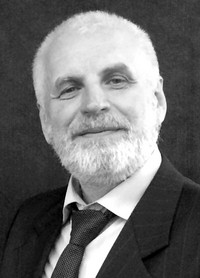BENEFITS OF ACTIVE INFERENCE METHOD FOR TRAINING PROCESS ANALYSIS IN ELITE ALPINE SKIING SPORT
Abstract
Objective of the study was to theoretically analyze and test benefits of an active inference method for training process in elite alpine skiing sport.
Methods and structure of the study. We sampled for the active inference method testing experiment national alpine skiers (n=20, equal gender split), qualifiers for the World Cup and tested their training progress by a) Stabilan-01 stabilometric test system with a biological feedback capacity, b) dopamine levels.
Results and conclusion. Dopamine levels in blood served as an indicator of changes in the athletes’ movement control system; these changes were related to execution of different training loads. We registered a decrease in prediction errors after the 21-day long training period aimed at technique adjustment, if compared to the other 21-day long training period aimed at improvement of physical capacities. As provided by the modern theory of active inference, these progresses are largely due to improvements in the somatosensory prediction of the movement results system performance and, as a result, progress forecasts depending on the somatomotor system state.
References
Christiansen L., Thomas R., Beck M.M. et al. (2019) The Beneficial Effect of Acute Exercise on Motor Memory Consolidation is Modulated by Dopaminergic Gene Profile. J Clin Med.;8(5):578.
Clark A. (2013). Whatever next? Predictive brains, situated agents, and the future of cognitive science. Behavioral and Brain Sciences, 36, 181-204.
Dikunets M., Dudko G., Glagovsky P., Mamedov I. (2020) Simultaneous quantitation of plasma catecholamines and metanephrines by LC-MS/MS. J. Braz. Chem. Soc. Vol. 31, No 7. pp. 1467 – 1474.
Feldman H., Friston K. (2010) Attention, uncertainty, and free-energy. Frontiers in human neuroscience. V. 4. p. 215.
Friston K. (2010). The free-energy principle: a unified brain theory? Nat Rev Neurosci 11(2):127.
Friston, K. (2011). What is optimal about motor control? Neuron,72(3), 488-498.
Trends Cogn Sci 13(7):293–301.
Hohwy J. (2013). The predictive mind. Oxford University Press.
Mang C.S., McEwen L.M., MacIsaac J.L., Snow N.J., Campbell K.L., Kobor M.S., Ross C., & Boyd L.A. (2017). Exploring genetic influences underlying acute aerobic exercise effects on motor learning. Scientific reports, 7(1), 12123.
Rescorla M. (2015) Bayesian perceptual psychology. In: The Oxford handbook of philosophy of perception, New York, NY: Oxford University Press, pp. 694–716.
Shestakov M.P. (2012) Stabilometry in sport. Palmarium Academic Publishing, 116 p.
Shevtsova I.G.., Navolotskii A.A., Eremich N.A., Shestakov M.P. (2020) Way of Assessing an Athlete’s Upright Posture Control while Performing Tracking Movements. Vestnik Moskovskogo Universiteta, Seriya 15: Vychislitel’naya Matematika I Kibernetika, , No. 4, pp. 46–60.

Additional Files
Published
Versions
- 23-05-2022 (6)
- 23-05-2022 (5)
- 23-05-2022 (4)
- 23-05-2022 (3)
- 23-05-2022 (2)
- 20-05-2022 (1)

